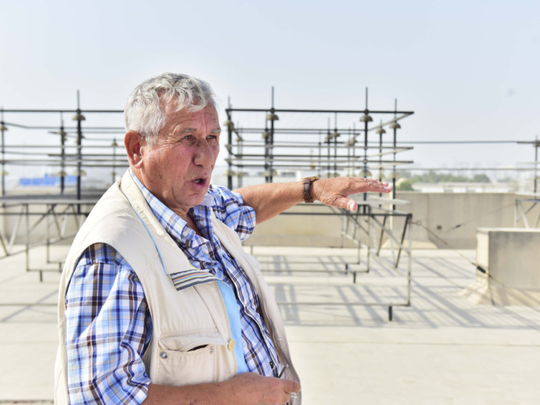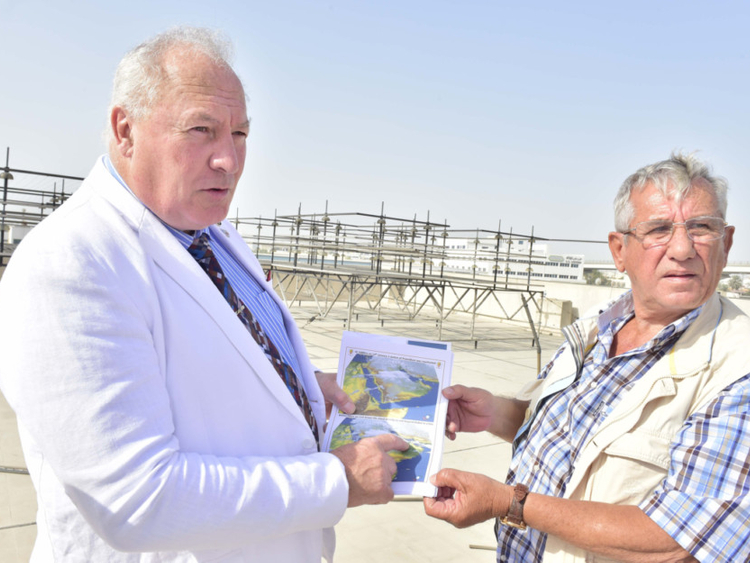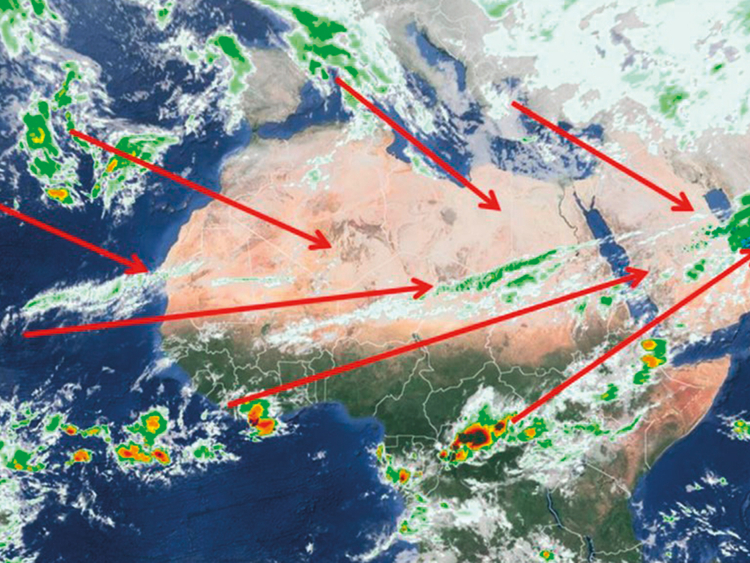
Dubai: Wondering how the UAE is receiving an extended spell of rain, unlike anything the country has experienced over the last few years?
Well, a Dubai-based scientist claims he has a hand in it.
A longtime resident of the UAE, the scientist who has spent his entire life in the research and development of weather-enhancing systems, claims he has made a breakthrough which has the potential of turning a desert into a green oasis.
Professor Yuri Tkatchenko, who is a partner and scientific director at Magnetic Technologies, says that the sporadic spells of showers that hit different parts of the country recently were a result of his trials.
He says he has developed a system that can draw in rain clouds from as far away as North Africa and Brazil.
“I started my research 25 years ago and today I can present proof that we can influence the weather system and draw in rain-yielding clouds to a target area. Not only that, with our technology we can help reduce dust in the air and improve health as well as increasing traffic safety by dissipating fog,” said Prof Tkatchenko, speaking exclusively with Gulf News as he switched on his generator in Dubai that he claims can improve the chances of rain significantly.
The Russian scientist says he has built on an idea developed by his compatriots during the 1970s and 1980s, sucking in rain clouds through electric ion-generating stations.
“In winter, the sky in the UAE is mostly hazy and dusty, which our ion generator can change. The generator can send the dust higher and form it into beautiful clouds. And with additional clouds drawn in from other regions, the temperature drops and the chances of rain increases,” he added.
So how does the system work?
According to Tkatchenko, the breakthrough is achieved by altering the presence of positive and negative ions in the atmosphere.
“Naturally, every atmosphere has both positive and negative ions at varying degrees. A rainforest usually has abundance of negative ions, which is why the air is so clean and pure there. But in a desert atmosphere, there is usually an imbalance of ions, with positive ions being in excess while the negative ions are in very small quantity. So, what we do is generate negative ions in millions to charge the clouds,” said Tkatchenko.
Explaining the process of influencing the weather system, he added: “The speed of the ions is like speed of light, so these ions generated in Dubai are capable of charging clouds in Africa, in other Middle Eastern countries or even in Europe and drawing them into the UAE.”
He said that the negative ions are important for a healthy atmosphere and it will help get rid of dust-borne diseases like asthma, bronchitis as well as throat infection.
Tkatchenka claims that the overcast skies and sporadic spells of rain seen in the UAE over the last four weeks were a result of his efforts and with more stations and support from the government, the results could be better.
“Over the last four weeks and with just one station, we have demonstrated our ability to manipulate and open up corridors across Europe and Africa, enabling us to draw from Atlantic cloud systems. This can work more effectively if a series of ion generators are set up around the country. For a city of the size of Dubai, around five to six stations would be required to have the maximum impact and, to influence the weather system of the entire country, we will need at least 50 generators,” said Tkatchenko.
The critical component of any rain-enhancement strategy is to maximise the capture, the sustainable clean storage and its treatment and then the efficient redistribution and use of rain, said Garry De La Pomerai, head of Project Development at Magnetic Technologies, adding that the UAE and the GCC needs a designed catchment system to make best use of the rain.
Stating that a collaboration is required between the systems of ‘ionisation’ and cloud seeding, he said that his firm is in talks with several government authorities to make a better use of the technology.
“The ‘cloud seeding’ industry can only benefit from this process of building and manipulating rain cloud. Without cloud, seeding cannot take place. It is a perfect partnership,” said De La Pomerai.
How it works
Corona discharge of electrodes from the ion generator leads to the ionisation of the air above the generator.
Under the influence of an electric field, the ionised air rises, thus providing a constant flow of air to the generator from the adjacent horizontal air mass then rising as charged ionised air.
Water molecules are an electrical dipole and therefore a high concentration of electrical charges in the air is multiplied which increases probability of moisture condensation.
The latent heat is released by condensation, ionised air is then heated and its vertical movement is increased as an electrical wind.
Each water molecule is formed around a particle, therefore the air pollution is actually contained within the water molecules forming air moisture.
The molecules as dipoles are charged by the ionic generator, which when charged are pumped upwards within the electrical wind, continue upwards to the lower stratosphere, breaking through the inverse layer, where natural high level air currents carry and disperse the moisture molecules naturally.











